| Your browser is not supported. | ||
|
Please browse our site using any of the following options:
| ||
Fishing options on Tasmania’s Incredible East Coast
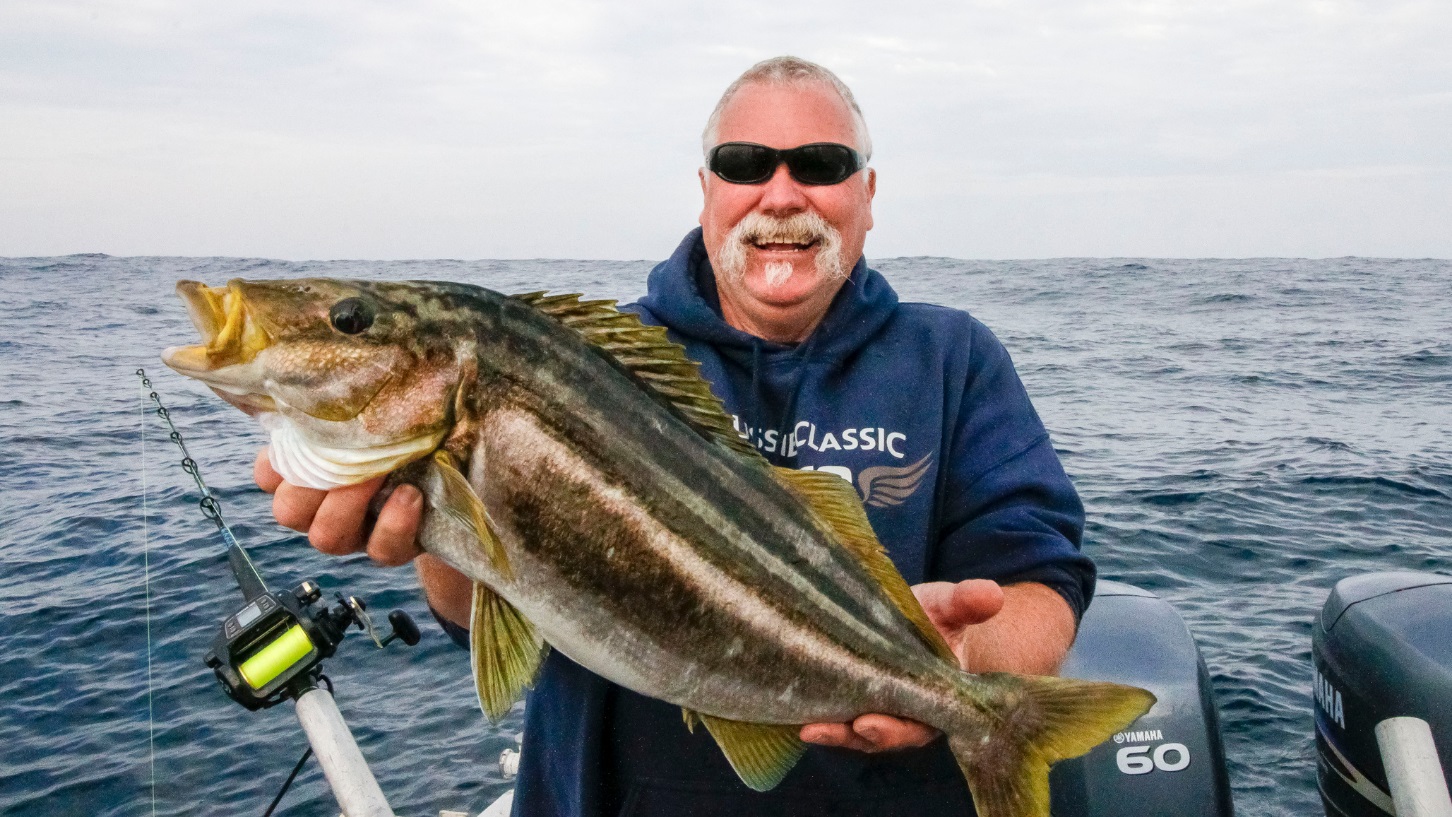
John Willis reckons the fishing at Bicheno isn't half bad, particularly well offshore. He's a regular to the area and has put together this guide for anyone interested in visiting Tassie's incredible East Coast.
There's just a slight hint of a chill in the air at 5 am after a balmy night at the quaint little coastal town of Bicheno, midway up the east coast of Tasmania. I was pleased to find the doors open at the Blue Edge Bakery, where a gruff, but very friendly nugget behind the counter questioned, "Strong flat white, mate?" I nodded with a smile, registering that he remembered me from yesterday's visit. The baker appeared behind the counter with a tray of irresistible chicken camembert pies, fresh from the oven. Decision made - these are too good to refuse and a great foundation for a long day at sea. The shop is in full stride with the baker starting his shift at 10 pm the night before, and the doors opening to serve fishermen since 3.00 am. This is a fishing town; it starts early.
The pre-dawn peace settles my mind and body in anticipation for yet another day at sea. The head's still fuzzy from last night's antics, but the anticipation of yet another day in this piscatorial playground beckons like an Athenian siren.
Bicheno is about halfway up the east coast of Tasmania and has the only public "all weather and tides" facility between St Helens, some 70km to the north, and Coles Bay or Triabunna, both somewhat to the south. Its close proximity to the Continental Shelf is one of the reasons for its bountiful, temperate waters. There are fishing options from beaches and land-based platforms through to extended offshore sojourns.
Target Species
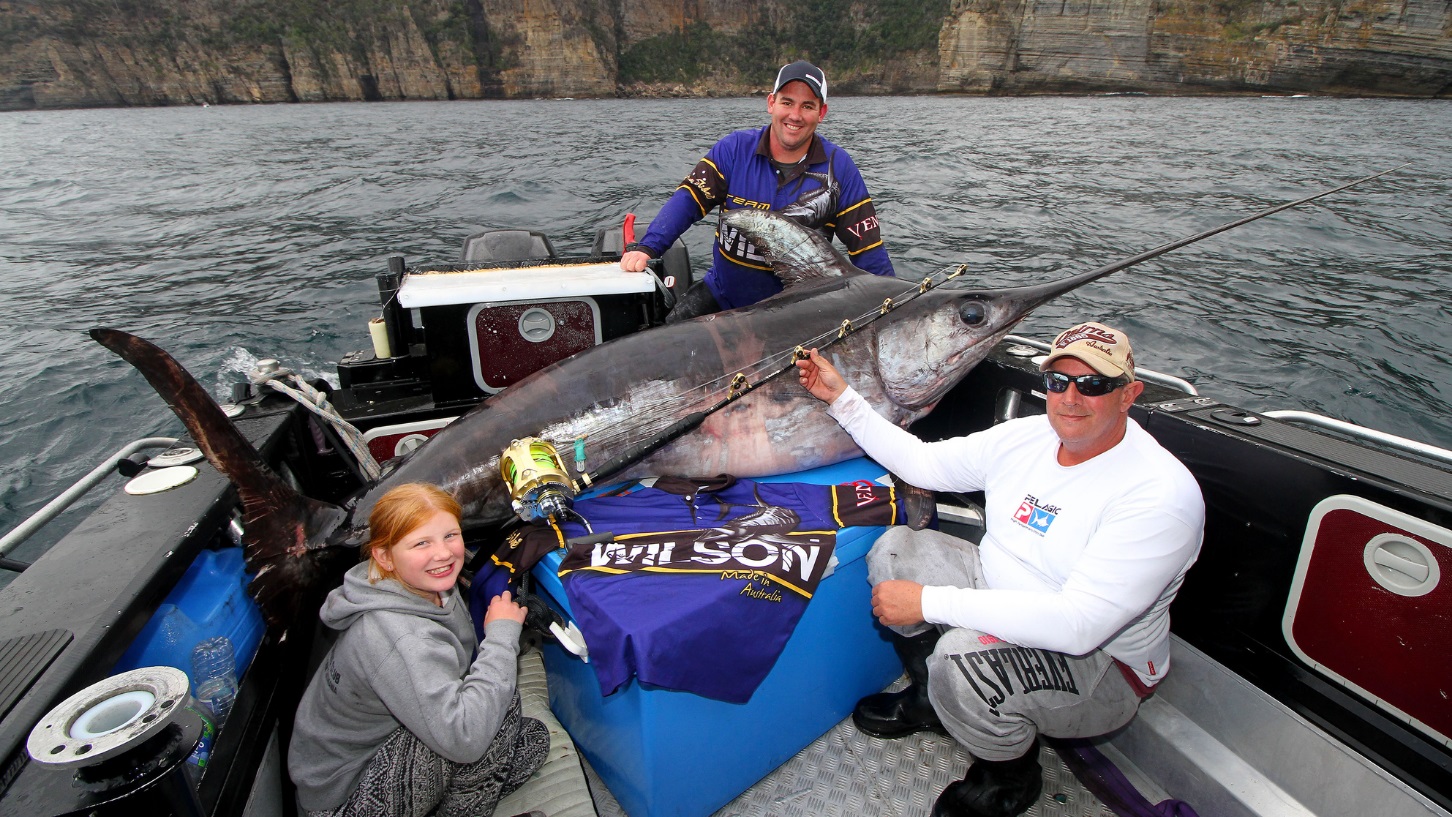
Target species include the coastal calamari, abalone, crayfish, flathead, salmon, gummy and school shark, plus inshore reef species. Out further are the prized striped trumpeter grounds, and beyond we search for large pelagics, including southern bluefin tuna, albacore, sharks and the occasional striped marlin. Even further eastwards are blue eye trevalla, hapuka, gemfish, ray's bream, blue grenadier, ling and the prized broadbill swordfish, along with a plethora of strange ooglies in the deep-water abyss on the steep edge of the Continental Shelf.
Bicheno is particularly popular between Christmas and April when the East Australian current feeds fish-rich warm water to the coastal fringes. There are a couple of trailerable dive charter boats, but only one permanently moored fishing charter that is more attuned to bottom bouncing than offshore game fishing. However, I have found the locals and most visiting anglers exceptionally friendly so it's worth nuzzling up to them if you are looking for an offshore adventure and don't have your own boat. You will share the ocean with huge pods of dolphins, including some of the largest individual specimens I have ever seen, and, of course, the annual migrating humpback and southern right whales between May and November.
Family fun
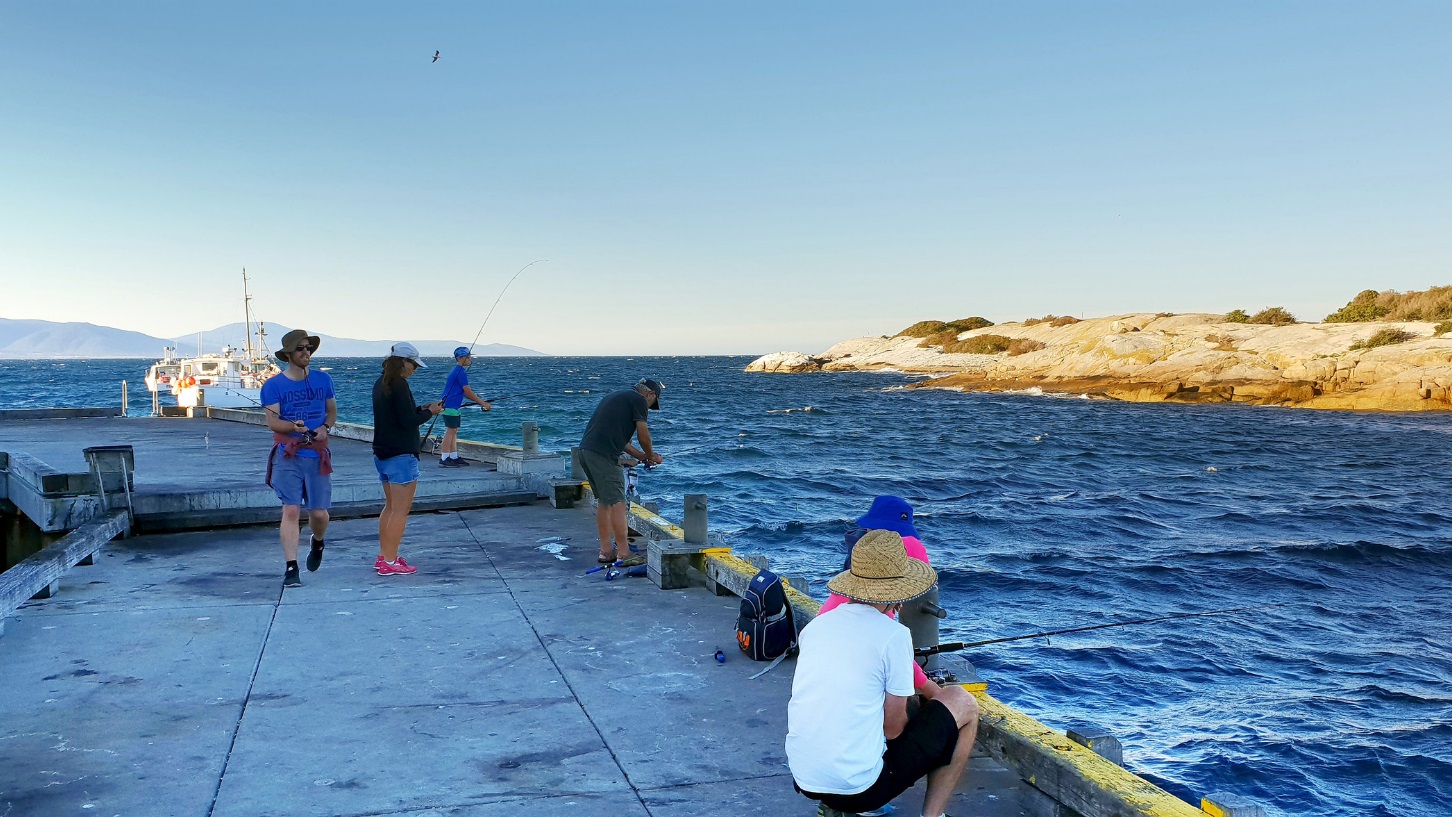
Big and little kids alike will love the nightly little penguin parade offered by Bicheno Penguin Tours, and for a truly unique experience there's the "Devils in the Dark" tour that showcases the iconic Tasmanian devil in an "as wild as possible setting." There's Tasmanian Coastal Seafoods and the Lobster Shack specialising in fresh local seafood and offering lobster rolls as a specialty. (Tell Sarah that Bear sent ya!) The region is home to some of the world's best cool-climate vineyards and many with their own tasting and restaurant facilities, including nearby White Sands Resort with its Iron House Vineyard, Brewery, Distillery and Restaurant.
When it comes time for some exercise, grab your camera and take the walk to the Whalers Lookout at the top of Bicheno township with its panoramic 360-degree views, complete with signs describing the history, cultural significance and features of this beautiful region. Back on the water's edge the Bicheno Blowhole erupts like a geyser out of the ochre-coloured granite rocks, even on a relatively small swell, but be warned that people have been washed out to sea off the platforms by underestimating the conditions!
The Bicheno Harbour is named "The Gulch". It is one of the most beautiful little naturally protected aquatic havens in the country, with direct ocean access to the prolific east coast fishery. It's a small natural harbour nestled behind the Governor Island Sanctuary and Marine Reserve. The air fills with the screech of its thousands of feathered inhabitants that all seem to be flapping aimlessly overhead, protesting the human hive of activity at the ramp. The seabird rookery boasts one of Tasmania's largest breeding populations of crested terns, but naturally it's just a little on the nose on this balmy mid-summer's morning.
You can catch succulent calamari amongst a selection of fish species off the jetty, or even dive for a crayfish in the busy little waterway. This idyllic little stretch of water even boasts a glass-bottom boat for tourists to view the undersea delights in the quaint little refuge.
Governor Island boasts a world-renowned marine reserve on the seaward side with some of the best scuba diving in Australia. Shallow kelp-covered reef quickly drops down over the colourful granite boulders to spectacular sponge gardens that a myriad of sea creatures call home.
The crayfish (southern rock lobster) season opened for both professional and recreational fishos alike just prior to our Australia Day Ficheno excursion, creating plenty of activity as punters launch and retrieve their boats to pull or place their pots in the hour preceding the dawn. Recreational fishers can buy a licence for one pot each and enjoy regular success on these spiny seafood delicacies.
Ficheno at Bicheno
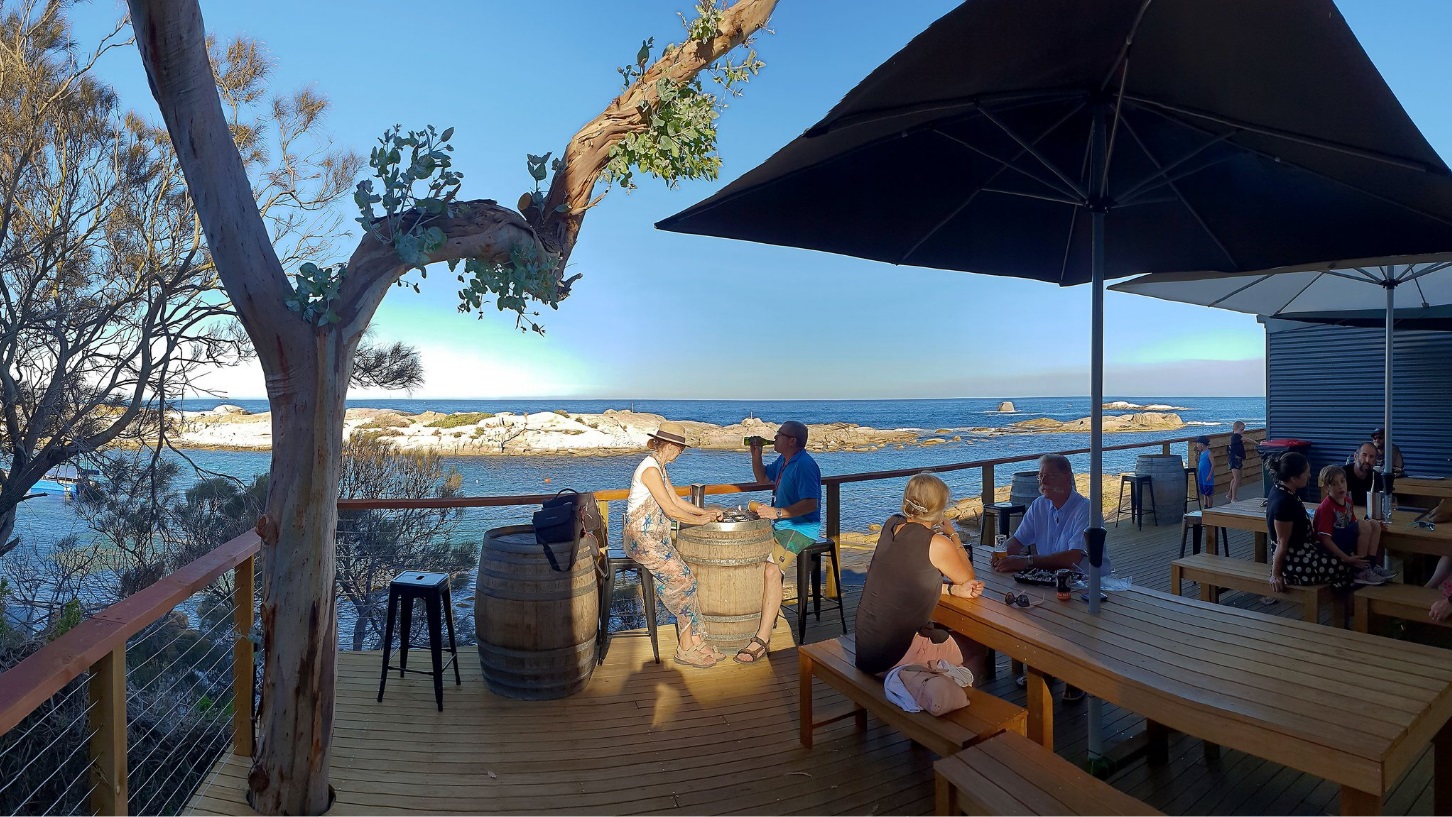
Ficheno is simply an annual get-together for a group of mainly Tasmanians whose prime objective is fishing. Catching is a priority, but it's also about a group of mates getting together once a year to enjoy and support each other in an ideal environment. There are all the fishing trip shenanigans, particularly when it involves Tasmanian fishing identities Adrian "Mozza" Morrisby and Kelly "Hooch" Hunt, also known as Team Penn/Simrad amongst other expletives.
I am amazed with how far-removed Tasmania seems from the land of Lacoste polos, Bermuda shorts, Timberland boat shoes and little white sports socks common too much of the mainland game fishing fraternity. There are no airs and graces down here - it's all about Blundies, hoodies, singlets, Stormy's, hi-vis and woolly hats with salt-of-the-earth seafarers who regularly face enormous seas drummed up by mighty Antarctic swells.
Larger trailer boats will get you to the wide grounds easily, however there is plenty to keep small boat owners happy close to shore. The inshore reefs hold good numbers of calamari and, of course, salmon, trevally and similar bread and butter species, but don't forget some heavier casting jigs for the hoodlums (yellowtail kingfish), particularly around crashing bommies and rock walls.
My skipper this day is "Bert", a third-generation coal miner from the nearby mountain town of St Marys. He loads the portable oven on the Skippercraft with party pies (an essential lifesaving requirement in the often-frigid Tasmanian conditions), sets the outriggers and tuna lures while the GPS shows the way to "Seymour" on the striped trumpeter grounds.
It's a sea mist kind of morning with a very gentle swell and sunshine gradually breaking through a strange summer inversion heralding some blistering heat blowing in from the north. I wondered as we passed numerous seals lazing on the calm swell how on earth they slept peacefully with the large numbers of big toothy predators threatening their daily existence.
Offshore antics
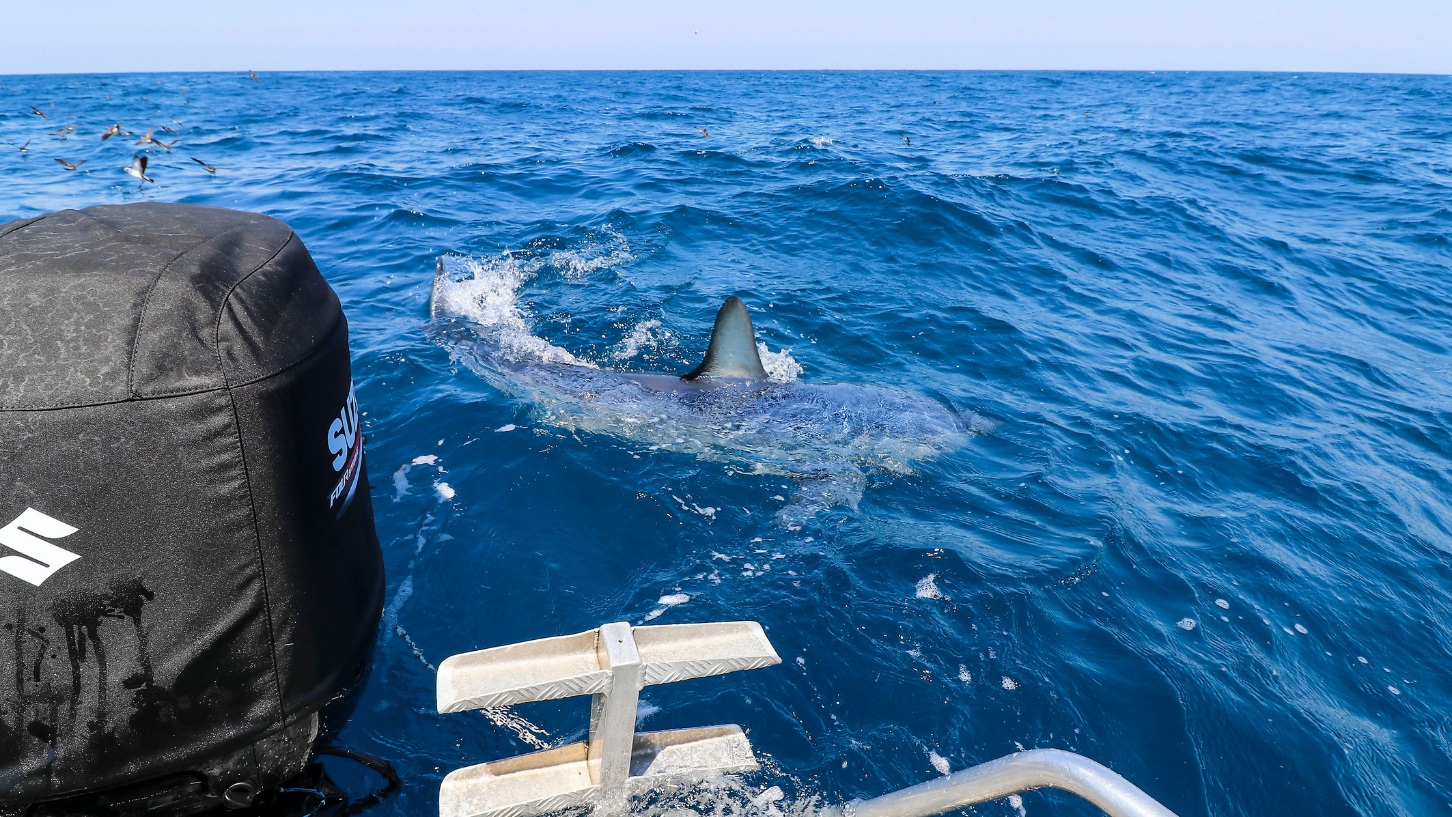
There are pods of big dolphins jumping playfully, cute little penguins ducking and weaving, and sea birds all around. Nature seemed to be enjoying a lazy morning where the fishing wasn't so hot, perhaps due to a quickly falling barometer heralding the oncoming heatwave. We laughed at a comical discussion on the VHF radio with the Ficheno clan debating the fighting abilities of a massive manta ray that chose to visit our friends' Stabicraft just as he boated a large striped trumpeter.
Deeper we go in search of something more sizeable, but not before the kill tanks are filled with a box of flathead. It constantly amazes me that we incessantly target flathead throughout inshore waterways, but when it comes to offshore waters they are almost an unspoken by-catch. Either way, their succulent fillets are most welcome on the dinner table and very simple rigs with all manners of bait or jigs on simple paternoster rigs do the job easily. I've seen flathead in waters to 100 metres, but it seems that 10-50 metres is far more productive for quality specimens.
It's only around 14 nautical miles to the first drop on the Shelf, but there are often plenty of bluefin, albacore and stripies to play with on the way. There's even the occasional striped marlin or yellowfin tuna in the warm summer currents and I am sure we hooked a jumbo broadbill on a lure momentarily. Don't be at all surprised if a school of kingies makes its presence known either!
Once we hit the first drop in around 300 metres, it's time to start looking. Hooch once said to me that "charts 'round here are more of an artist's impression" so don't be surprised if what you see on the plotter doesn't seem to correlate to what's on the sounder. Water depths from 300 to about 700 metres are worth a drop, depending on the tide, wind and current. It's always nice to try to set your drift across a "horseshoe" or similar underwater structure, and if your sounder can identify bait schools or individual fish, then drop away.
It is a long, long way to the bottom, so electric reels with heavy lead, leaders and at least 80kg braid are usual. Most fish at this depth have sharp teeth so heavy fluorocarbon paternosters are generally the go. But it is always worthwhile having a swordfish rig out as well. Specialised lights are attached to heavy leaders and large hooks to attract the swords. Bait can be just about any squid or whole fish, arrow or calamari, bonito, slimy or stripey - at this depth I really don't think they're that picky!
Swordfish have become the main target on the drop-off; however, there are always many surprises in the depths. Large bluefin are a regular by-catch, as are makos and all manner of sharks. If you want some action in between bottom bites, just start a berley trail and it never seems to take long to berley up the man in the grey coat - or gal as the case may be!
Makos are most common; in fact, I'm trying to remember any day that we haven't had one come up a decent berley trail. Fish around the 80-150kg mark are very common, but there are also much bigger models in relative abundance. I witnessed an unusual catch of a mako around 100kg that had its dorsal fin removed, probably by that awful fin clipping industry, but it had completely healed and was living a healthy lifestyle - until it took a bait at Bicheno, that is.
Find your local Anaconda store and check out our extensive range of fishing gear for your next fishing trip.